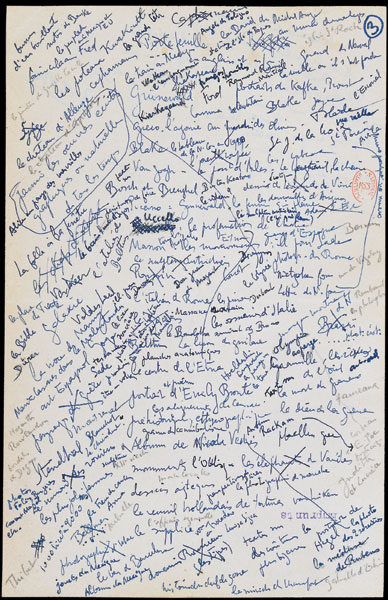anchor
Geometries of Consumption (pt. II)
continued from a previous post
The labyrinthine space in Borges'
Death and the Compass is mirrored in Franz Kafka's last novel,
The Castle. In that book, K., a land surveyor, manuvers through the hyperbureaucratized spaces of a mysterious town. The enigmatic Castle that looms malevolently in the background of the novel is also a kind of labyrinth. Kafka writes:
Keeping his eyes fixed upon the Castle, K. went ahead ... But as he came closer he was disappointed in the Castle, it was only a miserable little town, pieced together from village houses ... The church tower, tapering decisively without hesitation, straightaway toward the top, capped by a wide roof with red tiles ... was an earthy building ... but with a higher goal than the low jumble of houses and with a clearer expression than that of the dull work day.
The apocryphal Castle of Kafka's novel forms a literal top-down bureaucracy. This image is, however, important in that it prefigures two of French thinker Georges Bataille's most significant architectural typologies: the labyrinth and the pyramid. In
Against Architecture (1989), Denis Hollier outlines the architectural significance of the labyrinth and the pyramid in Bataille's writings.

For Hollier, the labyrinth is the architectonic expression of Reason. The labyrinth, of course, has historical significance, as it was Daedalus, the designer of the first labyrinth, who is considered the first professional architect. In any event, the complex interweavings and spatial manipulations of the labyrinth mirror the profundities of the designer's mind. A pyramid, on the other hand, is an architectural object that, when placed atop a labyrinth, obscures reason. The placement of the triangular castle church tower, as well as the superimposition of the rhomboid tetragrammaton in
Death and the Compass suggest pyramidal arrangements. These are placed on their respective labyrinths -- in
The Castle, the church tower presides over the "jumble" of houses; in
Death and the Compass, the tetragrammaton rhombus vectors onto the urban landscape.
Considering a city as a text may prove tautological. In one sense, a city could very well be one of the most impenetrable and complicated texts ever. Yet what does this say about the text? At least a similar reading of a text and a city reveals that both are produced objects. That a city is an object of analysis on the same level as that of a text also speaks to the power of the literary intellect. After all, what else gives testament to the profundity and fecundity of the intellect than a series of literary works equating manuvering through a city with reading a book? Perhaps not much. Perhaps nothing.





6 Comments
Hmm. I thought the pyramid works as the object of architecture that enables one to rise above/through the horizontal labyrinth of senses and everyday confusion - an action that finally only reveals the labyrinth to be all encompassing - we see everything through our "text/sense-glasses", no matter how we try to connect with the so called real. So the pyramid helps us to a deeper understanding - that is finally a dissapointment. That's what I remember of Hollier, not sure even in what part of his book this thought appeared (or if I got it right). Bataille was trying to get through with his writings and actions - actions "against architecture" that cannot be but opressive in it's stability and crystallisation.
The Labyrinth mirror the recursive element in architecture, realy the labyrinth would work perfect 3D and compared the Pyramide --- the most useless architecture object --- it offer the quality and detail that the impossible Pyramide ( impossible to enter easy to ecape ) never offered.
I think you're right Helsinki ... I thought that the pyramid was sui generis ... a pure gesture with the goal of obfuscating the labyrinth, and that the labyrinth ultimately prevailed. That was what I was trying to convey at least ... and it looks like I did not do a great job. Oh well.
These "entries" are actually notes I took during a class on contemporary architecture theory ... I hope people can see that they are a bit too ad hoc to be taken as serious interpretation.
Wow .. I'm a double fool .. I posted a response to my own school blog using someone else's computer, and forgot to log them out of their account. Pretend the above comment is from Smokety Mc Smoke Smoke.
whatever... miss c... : )
Have you read "Formless"? maybe most enjoyable books in a while - bouncing between bataille and art (or significant forms...) - also most understandable in a while. I recommend.
Yes, I've read Formless ... I've picked it up at different times in my life, and have gotten more out of it everytime I look at it again. Good suggestion, Helsinki.
Block this user
Are you sure you want to block this user and hide all related comments throughout the site?
Archinect
This is your first comment on Archinect. Your comment will be visible once approved.